
|
Astronomy Picture Of the Day (APOD)
 The Case of the Backwards Orbiting Asteroid
The Case of the Backwards Orbiting Asteroid
29.05.2018
Why does asteroid 2015 BZ509 orbit the Sun the backwards? As shown in the featured animation, Jupiter's trojan asteroids orbit the Sun in two major groups -- one just ahead of Jupiter, and one just behind -- but all orbit the Sun in the same direction as Jupiter.
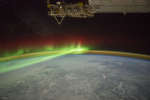 Aurora and Manicouagan Crater from the Space Station
Aurora and Manicouagan Crater from the Space Station
28.05.2018
How many of these can you find in today's featured photograph: an aurora, airglow, one of the oldest impact craters on the Earth, snow and ice, stars, city lights, and part of the International Space Station? Most of these can be identified by their distinctive colors.
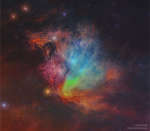 Seven Dusty Sisters
Seven Dusty Sisters
27.05.2018
Is this really the famous Pleaides star cluster? Known for its iconic blue stars, the Pleaides is shown here in infrared light where the surrounding dust outshines the stars. Here three infrared colors have been mapped into visual colors (R=24, G=12, B=4.6 microns).
 Coronal Rain on the Sun
Coronal Rain on the Sun
26.05.2018
Does it rain on the Sun? Yes, although what falls is not water but extremely hot plasma. An example occurred in mid-July 2012 after an eruption on the Sun that produced both a Coronal Mass Ejection and a moderate solar flare. What was more unusual, however, was what happened next.
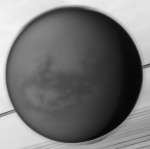 Titan: Moon over Saturn
Titan: Moon over Saturn
25.05.2018
Like Earth's moon, Saturn's largest moon Titan is locked in synchronous rotation. This mosiac of images recorded by the Cassini spacecraft in May of 2012 show's its anti-Saturn side, the side always facing away from the ringed gas giant.
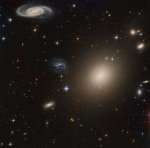 Galaxies Away
Galaxies Away
24.05.2018
This stunning group of galaxies is far, far away, about 450 million light-years from planet Earth and cataloged as galaxy cluster Abell S0740. Dominated by the cluster's large central elliptical galaxy (ESO 325-G004)...
 The Gum Nebula Expanse
The Gum Nebula Expanse
23.05.2018
Named for a cosmic cloud hunter, Australian astronomer Colin Stanley Gum (1924-1960), The Gum Nebula is so large and close it is actually hard to see. In fact, we are only about 450 light-years from the front edge and 1,500 light-years from the back edge of this interstellar expanse of glowing hydrogen gas.
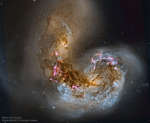 Spiral Galaxy NGC 4038 in Collision
Spiral Galaxy NGC 4038 in Collision
22.05.2018
This galaxy is having a bad millennium. In fact, the past 100 million years haven't been so good, and probably the next billion or so will be quite tumultuous. Visible toward the lower...
 Craters and Shadows at the Lunar Terminator
Craters and Shadows at the Lunar Terminator
21.05.2018
Why does the right part of this image of the Moon stand out? Shadows. The terminator line -- the line between light and dark -- occurs in the featured image so that just over half the Moon's face is illuminated by sunlight.
 Jupiter Cloud Animation from Juno
Jupiter Cloud Animation from Juno
20.05.2018
How do Jupiter's clouds move? To help find out, images taken with NASA's Juno spacecraft during its last pass near Jupiter have been analyzed and digitally extrapolated into a time-lapse video.
|
January February March April May June July August September October November December |
|||||||||||||||||||||||||||||||||||||||||||||||||